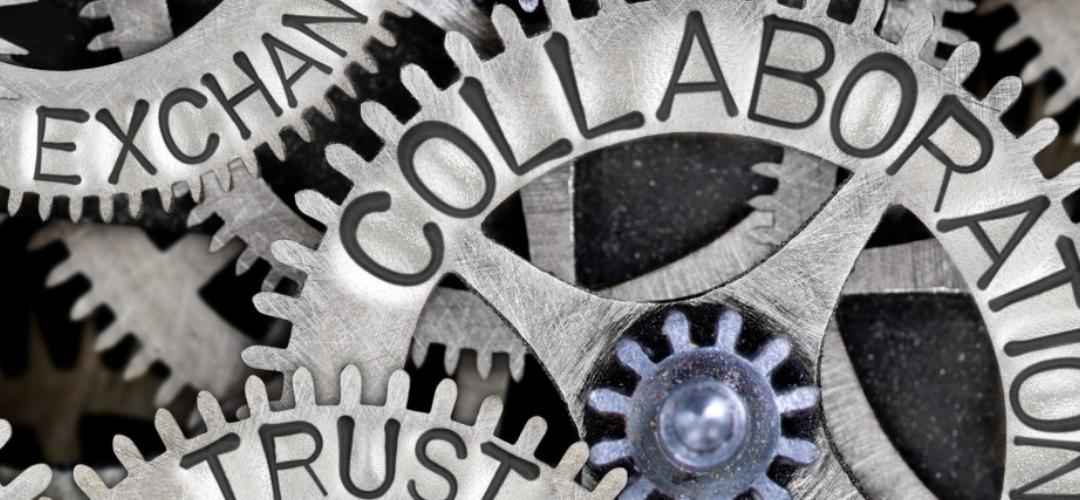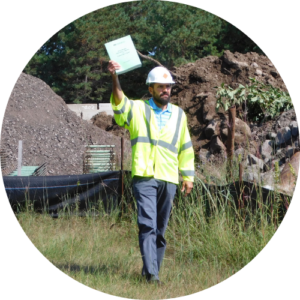This is a repost from Nancy Lyons, our 2022 GOVIT Symposium keynote!
As anyone who has read my book or previous posts knows, I am an advocate for future- and people-focused work cultures. Cultures are constantly changing—what workplaces looked and felt like ten years ago isn’t how workplaces look and feel now. And as we look beyond COVID, there is an opportunity to keep evolving in ways we might not imagine right now.
Work has changed since the Industrial Revolution, though I would argue it has not changed enough. This is likely because most companies take a top-down approach to all things related to the office. Instead, I suggest we all try approaching it with a design thinking lens; redefining and redesigning work is best done as a co-creation between leadership and all staff.
The truth is, we have always had the opportunity to work with all people to create welcoming work environments that meet their needs, but now we have an even greater opportunity than ever. Anxiety is high; trust is low. Old habits are potentially waning; new needs are emerging. So let’s figure out ways to move toward something that works for everyone. Yes, I said everyone.
I keep hearing companies that are bringing people back to the office (i.e., making them come back) say things like, “People miss seeing each other!” or “We just do better work when we’re all together.” But assuming that what we miss about what was is more important than what could be is short-sighted.
Here are some things I think every leader—at companies large and small—should ask about their workplace and work culture. I don’t want to recommend solutions because, like all people are unique, all work cultures should be, too. Instead, it’s more important to ask questions, get curious, and dedicate yourself to the process, not a particular set of outcomes.
How can I create a culture of flexibility?
When it comes to working, we often think of flexibility as time-based and as something that employers extend to employees. Two common examples include flexibility around whether people go into the office or not or being flexible with time-shifting (the ability for employees to work times of the day that suit them best). But flexibility is something every employer and employee has to recalibrate and extend to others, and it’s about more than time. It’s about a culture of trust and understanding, it’s about ditching perfection and embracing progress, and it’s about letting people do things in their way to get the best outcomes from individuals—which in turn serves the organization.
How can I build trust in a time when it’s very low?
Do we trust people? Do we trust our companies? The answer is mostly: no. Political and social unrest, the pandemic, and how both individuals and institutions have responded to those have eroded trust. Anxiety and tension are running high, yet we know that trust is a critical factor in effectively working together, even a necessary factor. Examine how and if trust has eroded, and focus on earning it back or building it up between individuals. This may look like building back mutual respect, psychological safety, or increasing communication transparency.
How can I design a workplace that isn’t one-size-fits-all?
Our workplaces are melting pots—every employee has a different set of circumstances and realities of their life. People work differently, and our work cultures must adapt to this. If we design for an “average” or take a one-size-fits-all approach, we will end up with a design that works for no one. There is no reason one person can’t work from 7 am to 3 pm while another works 9 am to 5 pm. If expectations about asynchronous communication and clear deadlines are set, let people just work when it’s ideal for them. I can already hear some people say time-shifting isn’t possible in their industry…it’s just one example. The point is that there are many ways people can be effective and productive and many ways companies can structure their expectations to enable that productivity.
How can I accommodate employees’ whole life, not just their work life?
People don’t do their best work when they’re worried about other things. We have lived realities that are unique, and everything that happens outside of work impacts how we show up at work. The notion of leaving one’s personal life at the door when one comes to work is antiquated and, honestly, was always a myth. It never happened. Think about ways people can move between the various roles they occupy—like worker, father, and school volunteer or manager, mother, activist—with less friction. All the things individuals do outside of work can benefit the business if we expand how we think about what and how people contribute to our workplaces.
How can I design for what my employees (and customers) need, not what they are used to?
Ask them! We are all much more aware of what we need to survive, maybe even thrive, since we went through a pandemic. We know what’s driving us nuts about our current situations, and we know what has been unexpectedly better. As leaders or leadership teams, we have to entirely ditch the idea that we know best. We don’t—we only know our perspective, our experience, and what has worked for us. “The way things have been done” is just an excuse not to do the work to involve others, and unfortunately, your culture will suffer if you don’t extend it to others.
Tips for co-creating
- First, don’t trip on the word “co-create.” Honestly, it’s a fancy term for listening.
- After you listen, keep people included. There is nothing more frustrating for people than contributing feedback or an idea. But then, having months goes by only to be presented with a new initiative or a new plan that includes a bastardized version of what they said. Create feedback loops to engage people along the way between listening sessions (or other inputs like surveys) and rolling out the new direction.
- Co-creating isn’t a checklist of things. It’s a mindset that assumes others can and should have a role in developing the environment around them. Consistently checking in with people is more important than devising the perfect all-hands workshop.
- Have a good sense of who among your people has the energy or interest in participating. For example, some people want to show up at work with a culture fully baked; some want to participate in a more involved way. When thinking about people and levels of participation, determine who should consult, who can contribute, and who can create. These levels of involvement can help you organize your efforts and also let people self-select into the work.
- Consider the various contexts in which people are operating and honor those. For example, don’t decide for your HR team what interviewing and onboarding should look like now. Instead, ask them to help think through the processes and procedures. Processes can be obstacles, or they can be enablers.
Co-creation might sound overwhelming. As a CEO, I know leaders don’t want to include everyone in every decision—it’s not feasible or practical. Yet, hearing input from your most important stakeholders—the people doing the work—is critical. Create opportunities and safe spaces for people to be honest about what they need to work and what they have to give to work. If we authentically hear people and what they need, the outcomes we land on will be inherently more people-focused.
Check out the full article here!














